
TU/e students who started their own business as an alternative to a side job
Student entrepreneurship fits into a trend of a growing number of young entrepreneurs between the ages of 18 and 24
We recently reported on figures published by the Dutch Chamber of Commerce showing that entrepreneurship among young people is on the rise: the number of businesses registered by young entrepreneurs between the ages of 18 and 24 has doubled in five years. Cursor decided to look into this trend and asked TU/e students about their entrepreneurial hunger. Who has started a business already alongside their studies, and why?
Sander van Eck, master’s student Industrial Design, has his life nicely sorted out: he lives in Portrush, a small town on the coast of Northern Ireland, where he can surf all day, study in between, and make some money with his two small businesses ‘Sander Surfboards’ and ‘Causeway Coasters.’
Van Eck always brings his wetsuit along in his car. “You never know when you’ll find a good wave,” he smiles. During winter, his wetsuit is sometimes covered with a thin layer of ice, but that doesn’t stop him. “I’ve always loved to surf and swim; I couldn’t do without a swimming pool during vacations.” After his first surf lesson near a beach campground, he got hooked. That first lesson quickly turned into a hobby that got out of hand, and he soon started to realize that he could make money repairing damaged surfboards. That was the start of his business Sander Surfboards. Van Eck: “I used to occasionally repair surfboards, and I needed to buy tools for that. What if I repair some more, I said to myself, so that I can at least cover the costs of those tools.”
He posted some messages on Facebook and things quickly started to pick up. Flash forward to today, and he’s the go-to-person in the area for these kinds of chores. Everyone knows where to find him. The shed in his student house soon became too small and he now has a large farm hangar at his disposal. Van Eck puts the theory about entrepreneurship he learned at the university straight into practice: “my value proposition is ‘fast repair close to the beach where people surf.’ I also build surfboards now, and that creates trust: if I know how to build them, I also know how to repair them. I also try to add rental to my list, because there is much tourism here. And when a board is too damaged and can no longer be repaired, rented out or sold, it can still end up in a café, or in someone’s living room as decoration, which is a very popular thing as well.” Van Eck is also very enthusiastic about recycling, and he always tries to reuse his waste material. “When I have some resin left, for example, I’ll use it in silicon molds with which I make candle jars, which I also put up for sale.” Almost nothing gets thrown out.
How do you build a surfboard?
“Building a surfboard is a bit like sculpting. The board comes in a mold. You take a mold made of foam that almost has the exact desired length of the board. This is done because of sturdiness: the more you take away, the more you compromise sturdiness. The mold is like a piece of foam with a wooden strip running down the center. You apply a resin coating to it. I mostly use polyester resin. You can also use epoxy, but I prefer polyester. And fiberglass cloth. The resin penetrates the fiber, which leads to a waterproof layer of resin on the board’s surface. It’s very precise work: you can’t put a piece back once you’ve removed it. It’s a combination of art and technology. It’s important how the surfboard feels in the water, and how you direct the water flow over the board – where you need to let go and where you need to move along with the water. The result is that one side of a surfboard has a hard edge, while the other side is softer and smoother. It’s like when you put your hand or a knife in the water: when you put your hand in, the water flows in a round curve, when you put a knife in, the water takes a sharp curve. Since I’m an experienced surfer myself, I can give my clients advice about what surfboard works best for them.”
Besides his surfboards, Van Eck runs another business, for which he makes iron coasters. “There’s an interesting story behind that: their hexagonal shape is inspired by the Causeway coast, which has many hexagonal stone formations. The name Coasters, obviously, has a double meaning. Coasters are handy products for local cafés and restaurants, but they’re also popular among tourists as well as locals. The product seems so simple, but it went through many iterations before I arrived at the final version. At first, I wanted to make coasters out of stone, but their minimal order value was too high, which made the investment too large. I visited coffee bars to try and sell them in advance. That didn’t work, but I bought the compressor, which I use to remove dust from the surfboards and paint them, from a man who runs a powder coating and metal cutting business. We started to work together, and the coasters are made of steel now. As a result, their weight is more comfortable and they have a powder coating, which smooths the edges and insulates them somewhat.”
Van Eck has a large piece of leftover steel with many holes where he cut his coasters, but that too will be recycled. “I can use it to make a robust looking lounge/coffee table with a base made of wood and legs made of steel, which I can sell to a coffee bar. That way, I won’t have to throw out any material. And when I sell the table, I will have covered the costs, and I’ll make a profit from each coaster I sell.”
Many assignments through networking
Daan de Rooij, master’s student Electrical Engineering, started working in the event industry when he was still in high school. Today, he is still active in this field with his business Black Box Enlightened. “I started via payroll, but I didn’t really like that. They had difficulty with the flexibility I was looking for, and so I quickly decided to register as a self-employed professional. This past year has been dramatic, obviously, as far as the event industry is concerned.” His attention then shifted to solar panels, followed by the funeral industry. “I can switch effortlessly, and that’s exactly what I like about this work, and about having a business alongside my studies.”
“Through my network, I got in touch during the coronavirus pandemic with someone who installs solar panels,” De Rooij says.” There’s more overlap between that business and the event industry that you might think. You can’t be afraid of heights, and whether you’re installing solar panels or working in the event industry, you’re always working with familiar equipment at an unfamiliar location.” De Rooij also started working in the funeral industry through contacts in his network, although his work didn’t entail carrying coffins. “I’m in charge of the music, PowerPoint and livestream.” He assisted during quite a number of funerals, but he doesn’t have much time for it anymore nowadays. “I’m currently graduating at a company in Zierikzee. I don’t have a network there yet. But I have to say that I’m always drawn to manual labor in between the work I do with my head. I’ll probably keep doing this kind of work, although I can’t say at this point whether it will be with solar panels, or in the event or funeral industry. But I like to meet many new people and to arrive at an end product in a short period of time. I also enjoy the freedom I have to make my own choices, and there’s more than enough work in both sectors (electrical engineering and the event industry, ed.). At the same time, it would also be nice to have some job stability. To know what to expect and to earn a salary at the end of the month.”
From chopping wood to GLOW
Whether he would advise his fellow students to start a business alongside their studies, depends on the type of person they are. “It gives an entrepreneurial type the chance to do some really cool things. Compared to a job in a supermarket, I would always go for it,” De Rooij says. “When you manage a business, it’s much more likely that you’ll travel to all kinds of interesting places than when you have a standard side job.” He can’t say what experience he enjoyed most. “There are so many fun assignments. A few years ago, a former Solar Team colleague got me a job at Stihl Timbersports (a wood chopping competition, ed.). Their technology team is in charge of timing, among other things. They use highspeed cameras to determine with an accuracy of a hundredth of a second when a log is smashed in half. That’s very different from the most recent edition of GLOW, during which I helped adorn the city with those red weather balloons. Very different, but working for both events was really cool.”
Don’t do it for the money
“Entrepreneurs who want to start a business alongside their studies are stimulated to do so, but mostly in the area of ‘challenges in society,’” Van Eck says, “which makes it really difficult to make an impact in such a short timeframe. That often makes it impossible to bring a product to the market, but I managed after only one semester. Another important factor in becoming a successful entrepreneur is motivation: managing a business takes more work than a regular side job. But if things go well, you’ll also earn much more than the standard hourly wage you make at a supermarket. Sometimes you need to invest and you’ll suffer a serious decline of income, but then you’ll capitalize on those investments.” You shouldn’t do it if you’re motivated by money, but you should if you’re challenge orientated and eager to learn, Van Eck believes. “Of course, there’s much money to be made potentially, as long as your product is in demand. When you have a side job, you know that an x number of hours will earn you a y amount of money. When you manage a business, your income may fluctuate significantly. But I see myself setting up a few more businesses in the future. I surf when the waves are good and I can combine it with my studies, a perfect situation. I have this freedom because I’m my own boss.”
Cas van Grunsven, master’s student Innovation Management, also showed his entrepreneurial spirit at an early age: he started building websites for his family and friends when he was twelve years old. “After that, I owned a web shop for iPhone cases for a while, which I later sold. I started to seriously work on custom-made projects when I was a freshman at Industrial Design. That’s when I realized how much I enjoyed it and when I started my business Codigital.” Building websites became his priority, and Van Grunsven had to organize his study activities around it. “That’s the reason why it’s taking a bit longer to complete my thesis and why I have a harder time with my exams, because I have less time to take part in lectures.” As far as that’s concerned, corona actually had a positive effect on Van Grunsven. “Suddenly I had time to rewatch all the lectures, really ideal. They were recorded in small, eight-minute segments, grouped by subject. That was really nice.”
“I think of my work as much more than just building websites,” Van Grunsven says. “When your aim is to have a high conversion rate, you need to think about how you want to approach people and make them complete an action. I learned that during my studies, and now I can use it directly in my work.” He can’t say at this point if he wants to do more with his business. “I’m not sure whether I want to continue to exclusively build apps and custom-made websites. I don’t know if that will remain a challenge in the long term. Perhaps I want to move more into the direction of consultancy. But since I’ve always been self-employed, I might have a problem with having to work for a boss. I have much freedom now: if I want to do something else on a Wednesday afternoon, that’s not a problem. That’s not possible when you work for a boss. And finances play a role as well: you don’t know whether you’ll earn the same when you’re an employee.”
Setting up a framework
Due to his practical experience, Van Eck faces all kinds of challenges that his fellow students – who spend their time exclusively in lecture halls – aren’t faced with. Think of processing residual material, or the technology he had to adjust. “The challenge with coating is that the item needs to hang. So, I put a hole in it, but that made it difficult to reapply the cork, so I had to make another hole. That’s quite a chore if you suddenly need to make a hundred items or more. I was never really faced with these kinds of challenges at the university, where I mostly had to present business models. But I would always think to myself ‘when will we finally start to put it into practice?’ You only start to actually learn things once you try them out.”
“I can now reflect on how my experience as an entrepreneur relates to what I’ve learned during my studies. How do you gain that practical experience from entrepreneurship in an academic setting? And how do you give that practical experience enough academic weight so that it qualifies as a project for your study program? That’s something I want to sort out not just for myself, but for my fellow students as well. I want to set up a framework with the most important learning points for entrepreneurship in daily practice.”
Students who would like to start their own business one day shouldn’t wait until they’ve completed their studies, Van Grunsven says. “You’ll have something in place when you graduate.” And like Van Eck, he too mentions the link between theory and practice. “I had to read many complex papers during my studies that were difficult to place. But when I was talking with clients, I suddenly realized that I could directly implement those theories and frameworks. You put it into practice straight away, and that makes it easier to remember it. What I really enjoy is when a client comes to me with a problem that we try to solve together and that they rely on my expertise, and that you can see that it works.”

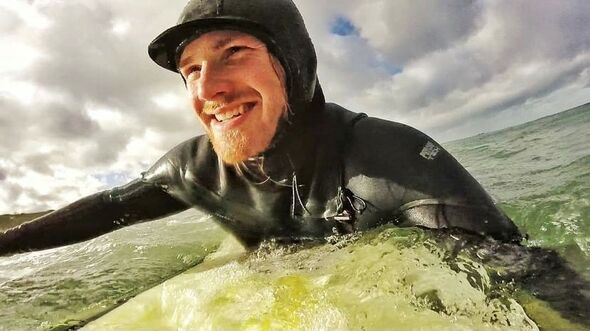
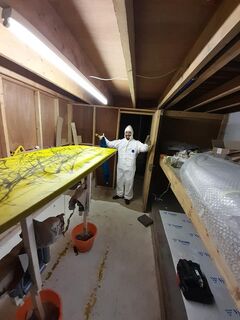
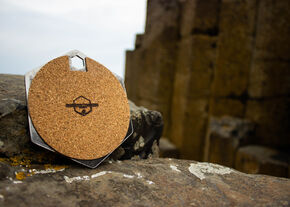

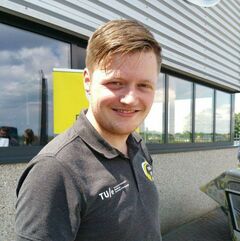


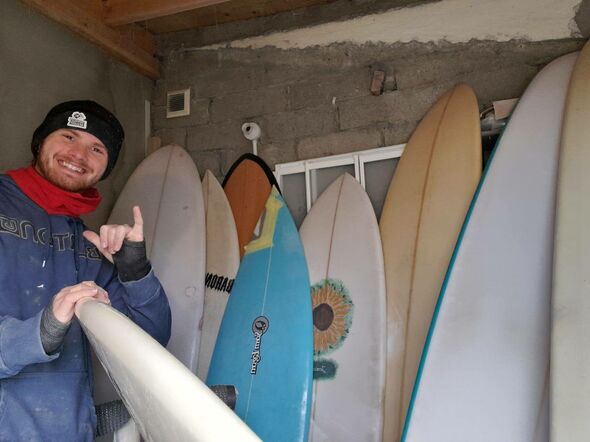
Discussion